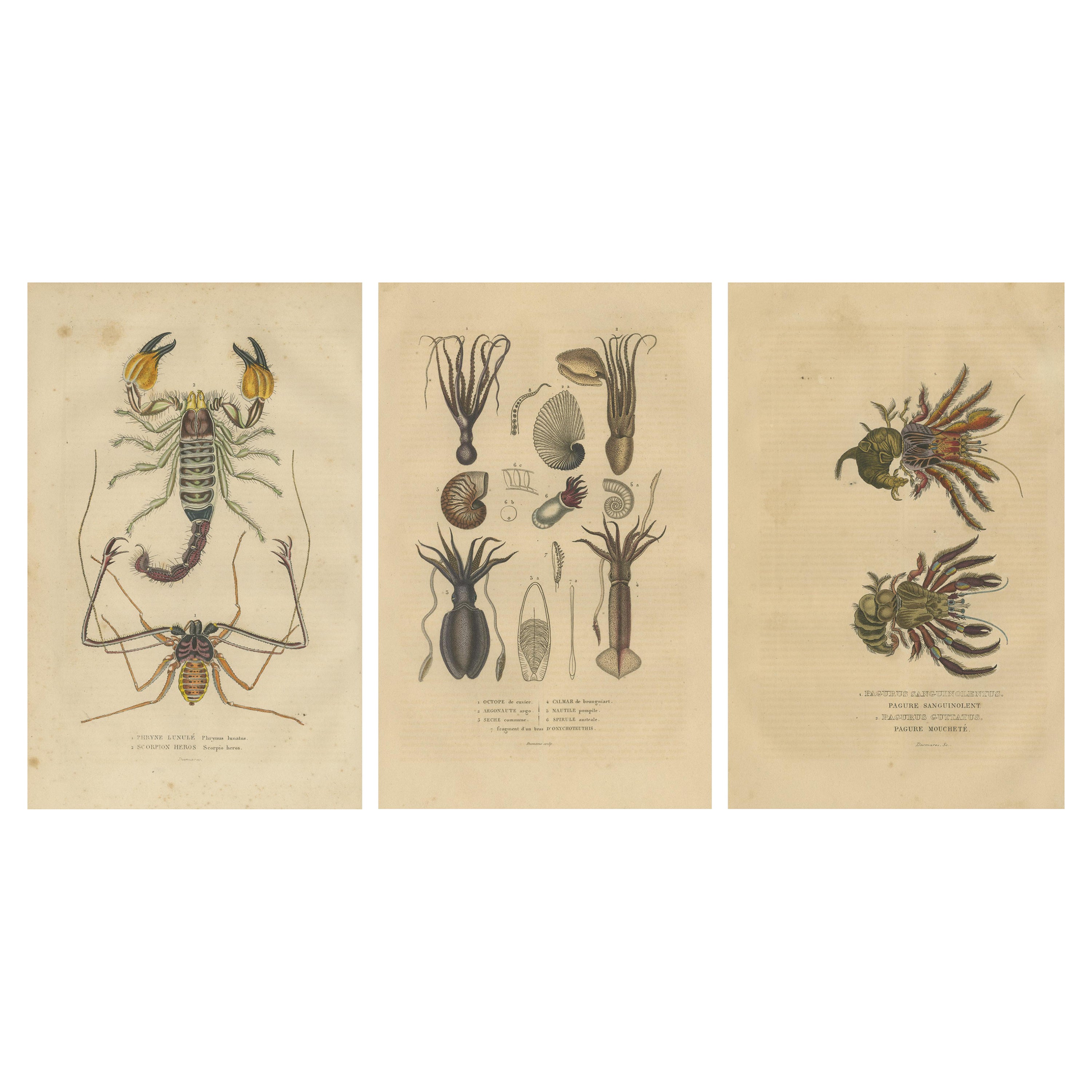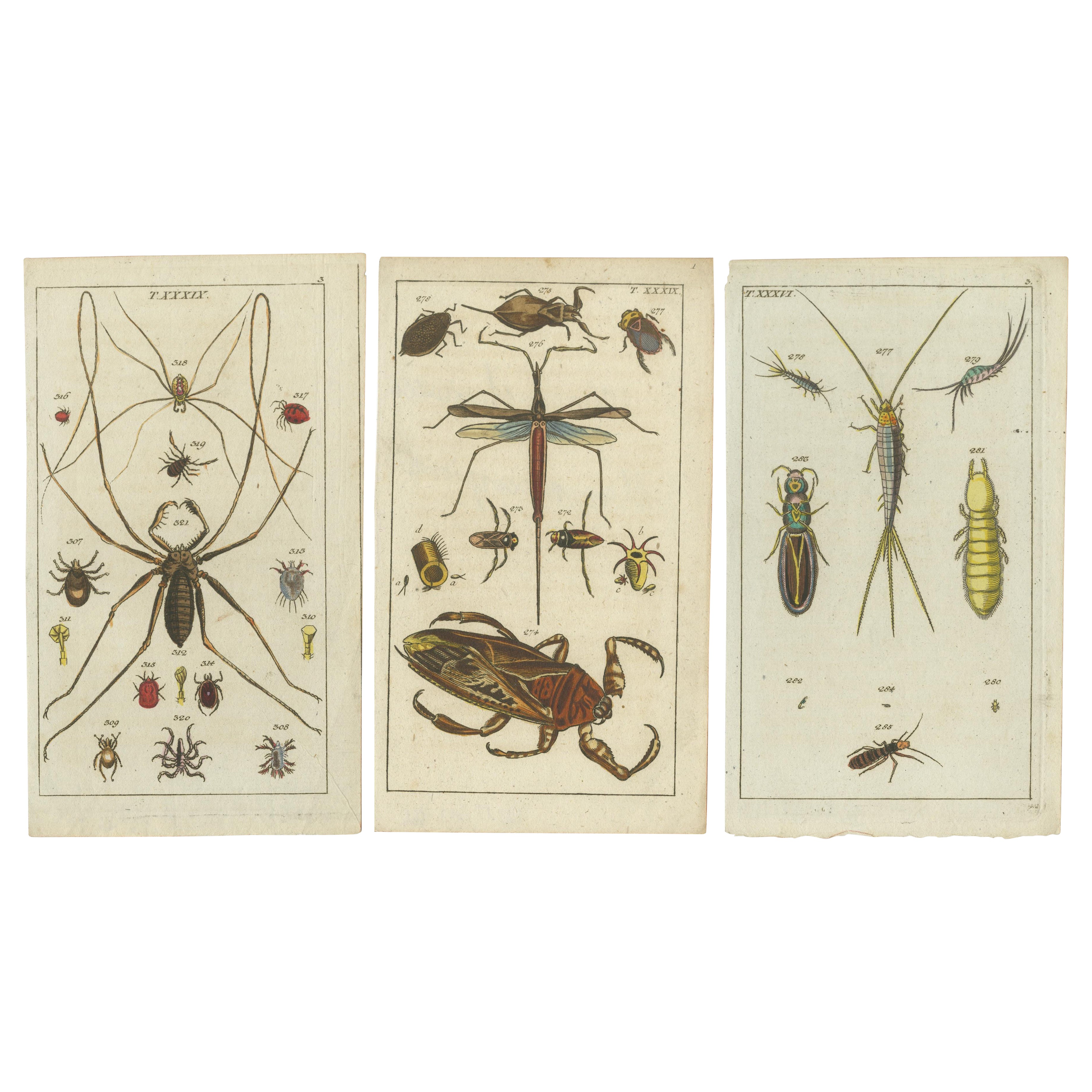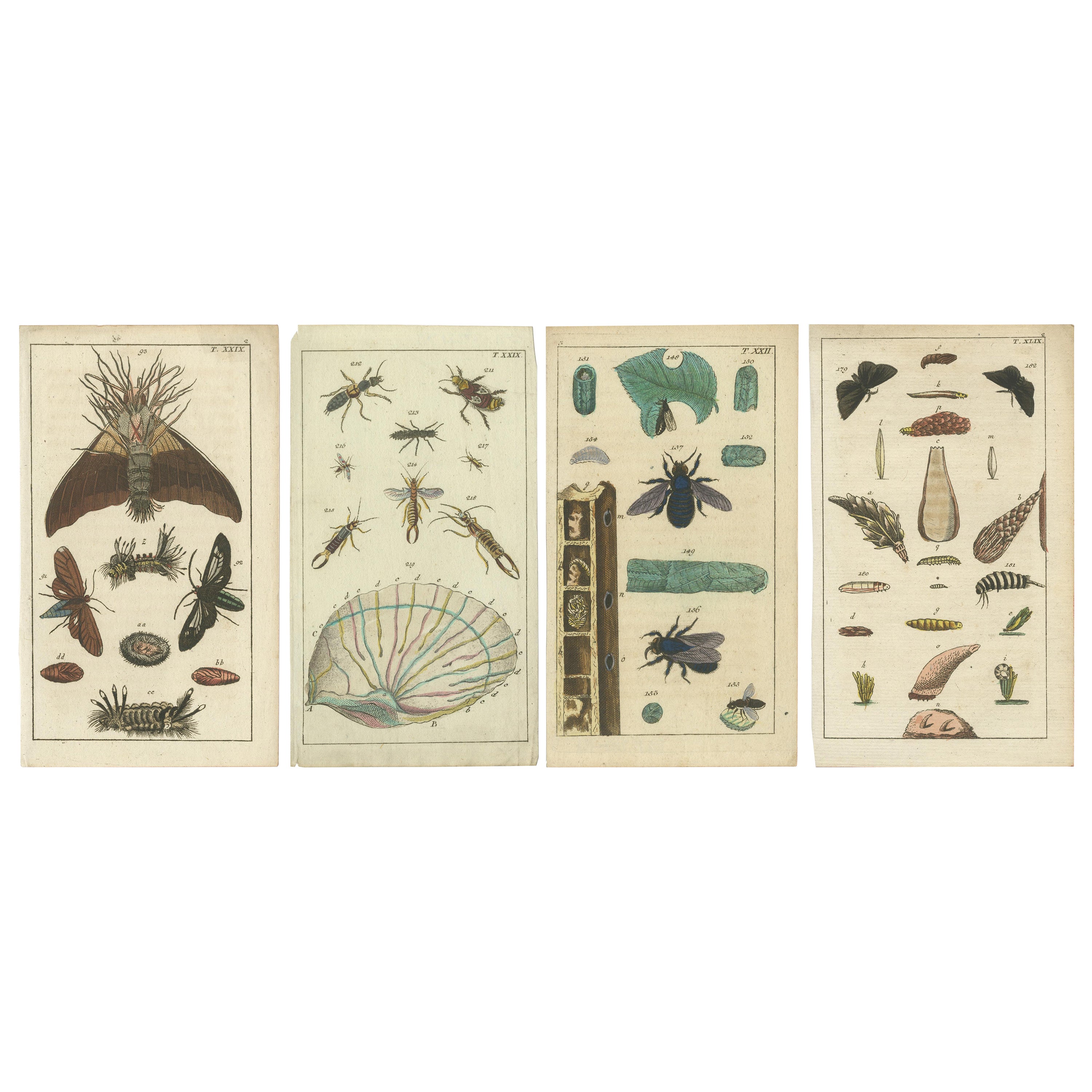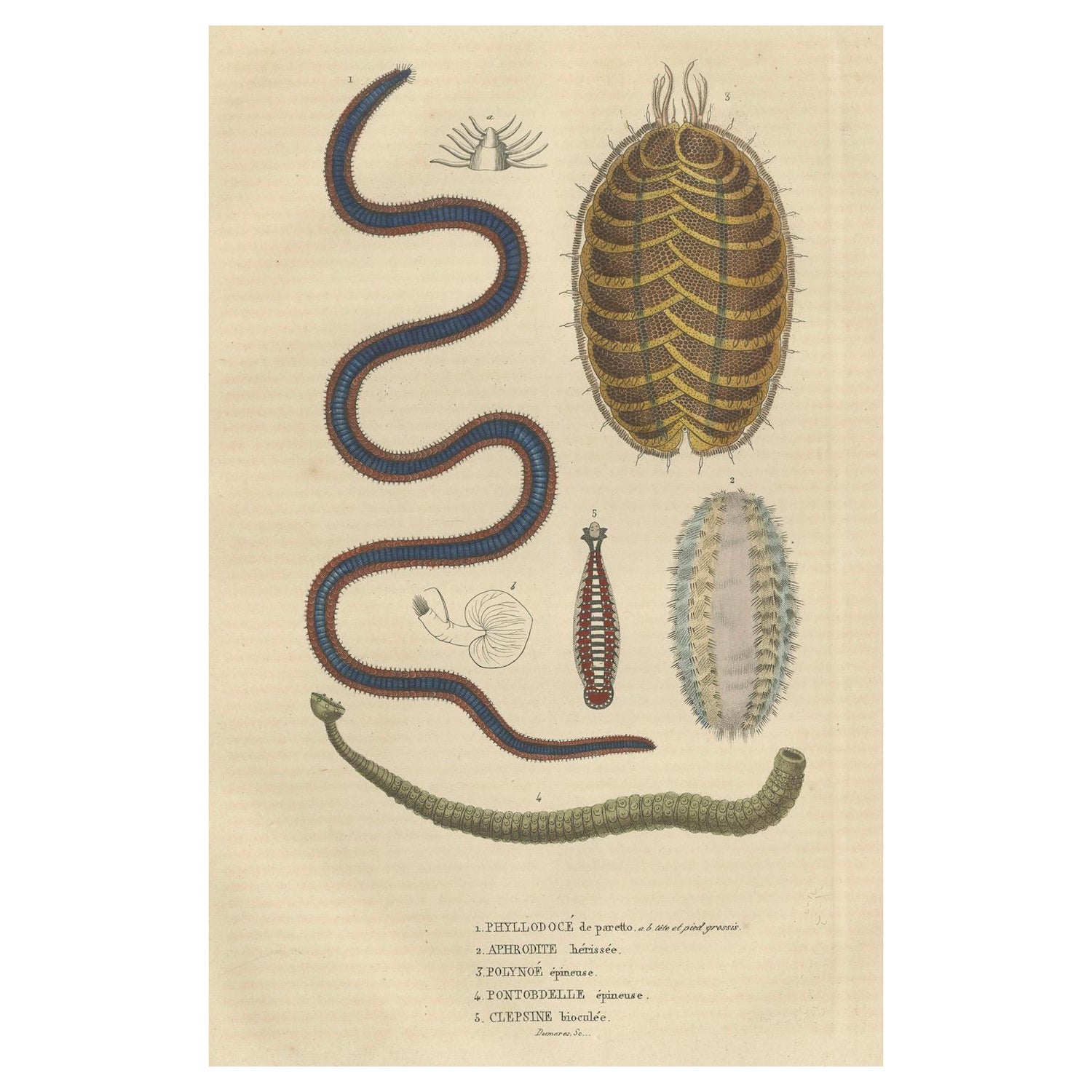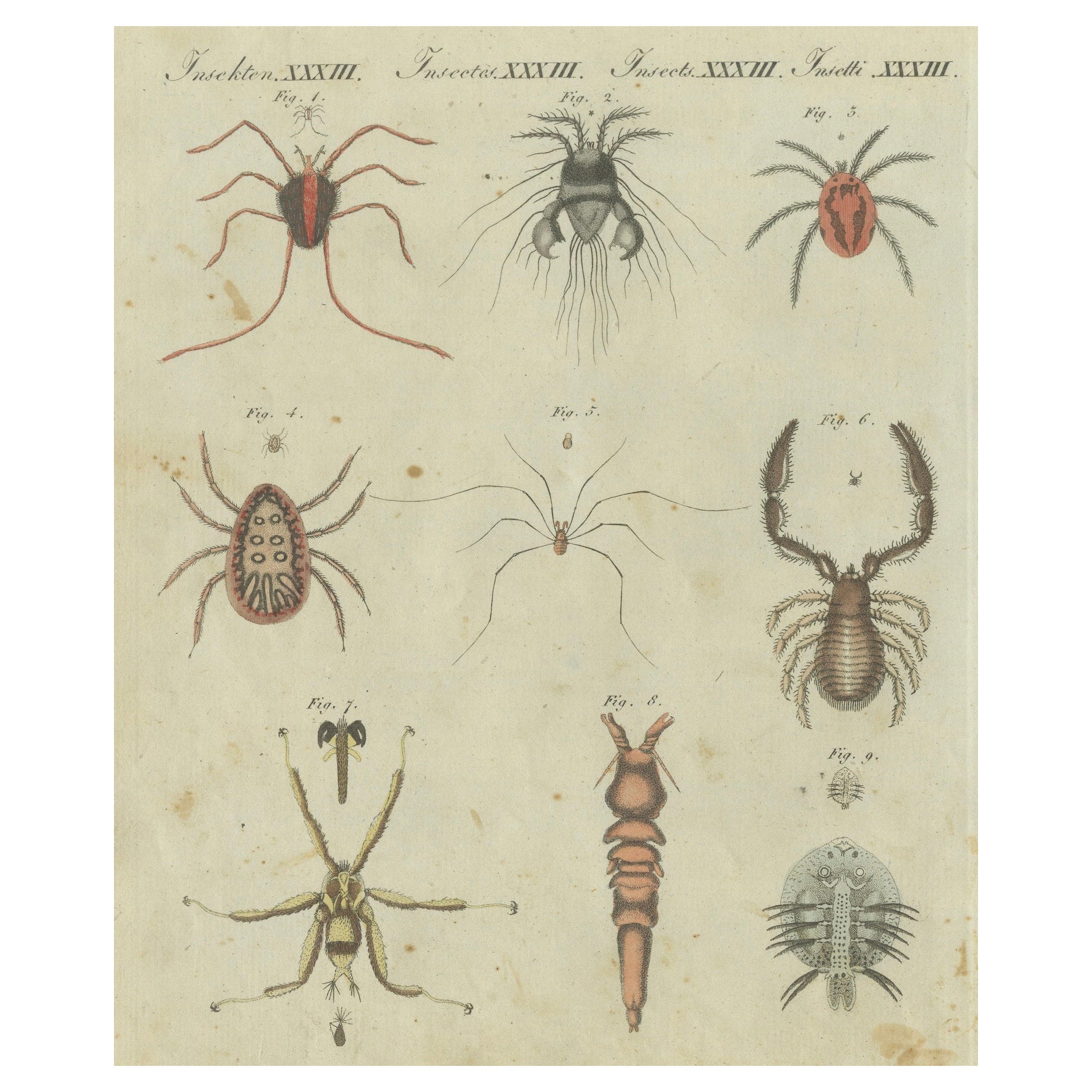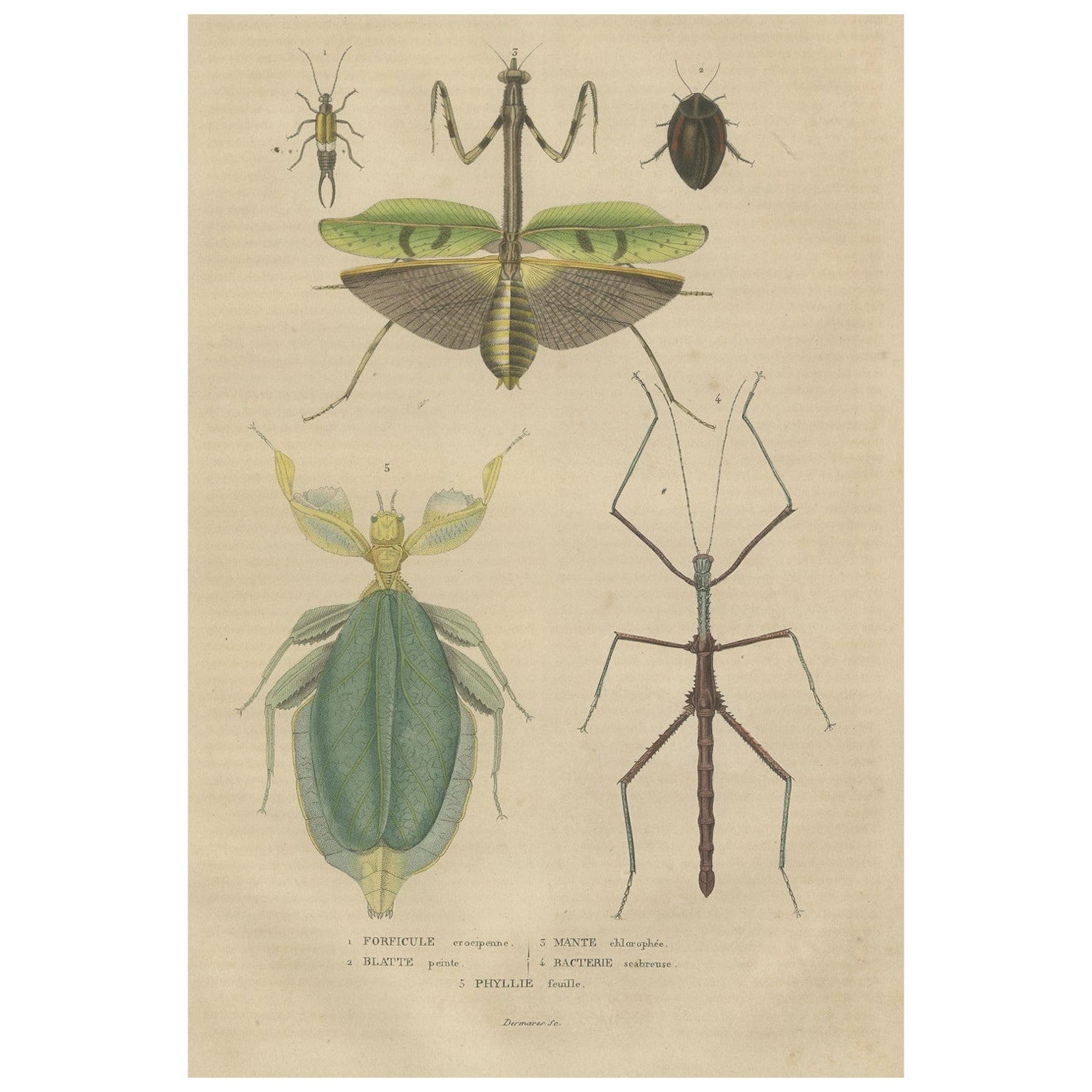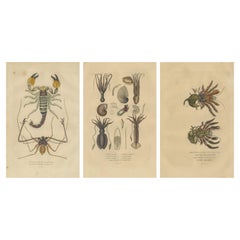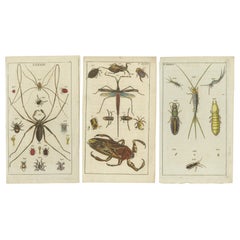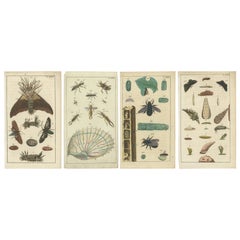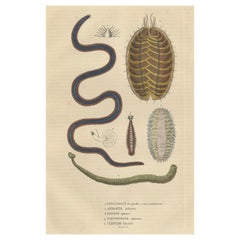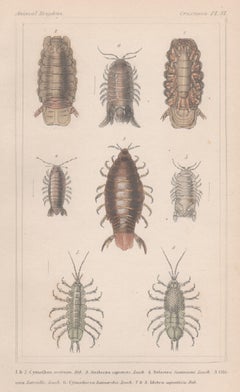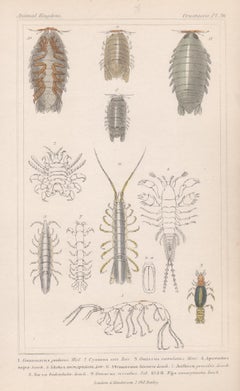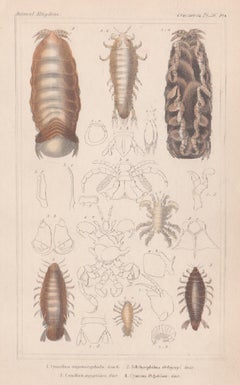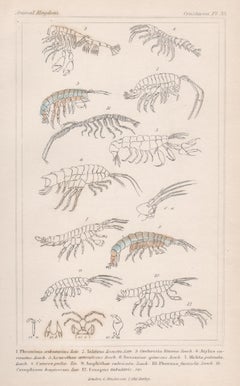Items Similar to 1845 Scientific Art: Handcolored Engraving of Marine Invertebrates and Insects
Want more images or videos?
Request additional images or videos from the seller
1 of 6
1845 Scientific Art: Handcolored Engraving of Marine Invertebrates and Insects
$182.12
$227.6520% Off
£135.57
£169.4720% Off
€152
€19020% Off
CA$249.46
CA$311.8220% Off
A$277.45
A$346.8120% Off
CHF 144.88
CHF 181.0920% Off
MX$3,376.26
MX$4,220.3320% Off
NOK 1,850.28
NOK 2,312.8520% Off
SEK 1,735.24
SEK 2,169.0520% Off
DKK 1,157.12
DKK 1,446.4020% Off
Shipping
Retrieving quote...The 1stDibs Promise:
Authenticity Guarantee,
Money-Back Guarantee,
24-Hour Cancellation
About the Item
This image is a beautifully detailed handcolored engraving from 1845, featuring a series of marine invertebrates and insects. It includes eight specimens, each meticulously illustrated with a focus on anatomical accuracy and detail. The creatures are numbered and labeled in French, indicating their scientific names, which adds to the scholarly nature of the piece.
Here's a description of each specimen:
1. "Iule très grand" – a depiction of a large millipede, showcasing its elongated body and numerous segmented sections.
2. "Polydesme granuleux" – Another type of millipede, distinguished by its granulated texture and banded body segments.
3. "Polyxene lasuré" – A creature with a segmented body and a less pronounced cylindrical shape, possibly a type of marine polychaete.
4. "Scutigère mardarine" – This creature resembles a centipede with its elongated body and many pairs of legs.
5. "Scutigère aranéoide" – An arthropod that features a segmented body and long, spindly legs, similar to that of a spider.
6. "Poudre plombée" – The image is not clear enough to identify this specimen accurately without further context.
7. "Philoptère de l'albatros" – This is likely a louse found on an albatross, emphasizing the intricate detail of its limbs and body structure.
8. "Puce irritante" – This could refer to a flea, known for its jumping ability and irritant bites.
Each specimen is drawn with precision, showcasing the characteristics that would be key to identification and study, such as body segmentation, leg arrangement, and antennae. The coloration of these engravings is subtle yet distinct, bringing life to the depictions in a way that black and white illustrations cannot.
The paper exhibits a creamy hue, indicative of its age, with some slight discoloration and edge wear that adds to the historical authenticity of the print. The condition of the image, with its rich detail and preservation of color, suggests it has been well cared for over the years. This engraving would likely have been used for educational purposes or to grace the pages of a naturalist's collection. It is a fine example of 19th-century scientific illustration.
This print not only serves as a scientific record but also as a work of art, reflecting the dual interests of the Victorian era in both natural history and illustration. It is a remarkable piece that would be a significant addition to any collection of natural history art or an elegant decorative piece for those with a taste for the historic and the natural world.
The style of the illustration is reminiscent of 19th-century scientific prints, which were often used in natural history books to document various species.
More info on the book in which it was published:
The 'Dictionnaire Classique des Sciences Naturelles' by Pierre Auguste Joseph Drapiez stands as a remarkable testament to 19th-century natural sciences. Published in Brussels in 1845, this work represents an expansive collation of knowledge, building upon the pioneering works of Buffon, Daubenton, Lacepede, Cuvier, de Jussieu, and other influential naturalists.
The prints within this compendium likely showcase a rich amalgamation of artistic precision and scientific accuracy. Drapiez, himself a Belgian naturalist, would have aimed for detailed representations of flora, fauna, and scientific phenomena, mirroring the illustrative styles prevalent during his time. Given the era's emphasis on illustration, these prints were likely engraved meticulously, possibly portraying intricate anatomical details or lifelike depictions of the natural world.
With Drapiez's background in natural history, the prints might bear testament to his commitment to scientific authenticity, aiming to educate and inspire scholars and enthusiasts alike. These engravings would have complemented the text, offering visual aids that elucidate the concepts and specimens discussed in the volume.
Overall, the prints of 'Dictionnaire Classique des Sciences Naturelles' likely serve as both artistic representations and invaluable scientific resources, encapsulating the essence of 19th-century natural history exploration and documentation.
- Dimensions:Height: 10.44 in (26.5 cm)Width: 6.7 in (17 cm)Depth: 0 in (0.02 mm)
- Materials and Techniques:Paper,Engraved
- Period:
- Date of Manufacture:1845
- Condition:Condition: Good. Light browning and some light spots due to aging and handling. Some slight discoloration and edge wear that adds to the historical authenticity of the Print.
- Seller Location:Langweer, NL
- Reference Number:Seller: BG-13261-761stDibs: LU3054337683482
About the Seller
5.0
Recognized Seller
These prestigious sellers are industry leaders and represent the highest echelon for item quality and design.
Platinum Seller
Premium sellers with a 4.7+ rating and 24-hour response times
Established in 2009
1stDibs seller since 2017
2,508 sales on 1stDibs
Typical response time: <1 hour
- ShippingRetrieving quote...Shipping from: Langweer, Netherlands
- Return Policy
Authenticity Guarantee
In the unlikely event there’s an issue with an item’s authenticity, contact us within 1 year for a full refund. DetailsMoney-Back Guarantee
If your item is not as described, is damaged in transit, or does not arrive, contact us within 7 days for a full refund. Details24-Hour Cancellation
You have a 24-hour grace period in which to reconsider your purchase, with no questions asked.Vetted Professional Sellers
Our world-class sellers must adhere to strict standards for service and quality, maintaining the integrity of our listings.Price-Match Guarantee
If you find that a seller listed the same item for a lower price elsewhere, we’ll match it.Trusted Global Delivery
Our best-in-class carrier network provides specialized shipping options worldwide, including custom delivery.More From This Seller
View AllCollection of Old Naturalist Illustrations: Marine Life and Arthropods, 1845
Located in Langweer, NL
The collage presents a delicate assembly of antique scientific prints, each one a remnant from a time when the natural world was still shroud...
Category
Antique 1840s Prints
Materials
Paper
$277 Sale Price / set
20% Off
Arachnid & Insect Engravings: Stunning Hand-Colored Natural History Art, 1832
Located in Langweer, NL
Rare Antique Natural History Prints: Arachnids and Insects in Stunning Detail
This set of three small original antique engravings from 1832 showcases the fascinating world of arac...
Category
Antique 1830s Prints
Materials
Paper
Rare Antique Natural History Prints: Fascinating Insects and Life Cycles, 1832
Located in Langweer, NL
Title: Rare Antique Natural History Prints: Fascinating Insects and Life Cycles
Description:
This set of four small original antique prints from 1832 offers an extraordinary gli...
Category
Antique 1830s Prints
Materials
Paper
Varieties of Marine Invertebrates: Spined Worms and Bicolored Leech, 1845
Located in Langweer, NL
This original antique engraving depicts a variety of marine invertebrates:
1. **Phyllococte de part et d'autre épineux** - This might refer to a type of marine worm or possibly a se...
Category
Antique 1840s Prints
Materials
Paper
$201 Sale Price
20% Off
Intricate Arachnids and Insects: Hand-Colored Engraving Published in 1805
Located in Langweer, NL
Title: Engraving of Arachnids and Insects from Early 19th-Century Natural History Collection
Description:
This detailed engraving, part of an early 19th-century natural history co...
Category
Antique Early 1800s Prints
Materials
Paper
$94 Sale Price
20% Off
19th Century Insects Microorganisms Handcolored Antique Engraving, 1845
Located in Langweer, NL
An antique hand-colored print by Pierre Auguste Joseph Drapiez, a Belgian naturalist and artist. The print contains depictions of various insects and microorganisms:
1. **Forficule crocipenne:** This refers to a species of earwig. "Forficule" is an old term used for earwigs, and "crocipenne" might indicate a particular species or feature of an earwig.
2. **Mante chlorophée:** This refers to a praying mantis ("Mante religieuse...
Category
Antique 1840s Prints
Materials
Paper
$162 Sale Price
20% Off
You May Also Like
Crustaceans, antique English natural history engraving print, 1837
Located in Melbourne, Victoria
'Crustacea'
Copper-line engraving with original hand-colouring. From Baron Georges Cuvier's (1769-1832) 'Animal Kingdom', published in London in 1837.
210mm by 130mm (sheet)
Category
Mid-19th Century Naturalistic Animal Prints
Materials
Engraving
Crustaceans, antique English natural history engraving print, 1837
Located in Melbourne, Victoria
'Crustacea'
Copper-line engraving with original hand-colouring. From Baron Georges Cuvier's (1769-1832) 'Animal Kingdom', published in London in 1837.
210mm by 130mm (sheet)
Category
Mid-19th Century Naturalistic Animal Prints
Materials
Engraving
Crustaceans, antique English natural history engraving print, 1837
Located in Melbourne, Victoria
'Crustacea'
Copper-line engraving with original hand-colouring. From Baron Georges Cuvier's (1769-1832) 'Animal Kingdom', published in London in 1837.
210mm by 130mm (sheet)
Category
Mid-19th Century Naturalistic Animal Prints
Materials
Engraving
Crustaceans, antique English natural history engraving print, 1837
Located in Melbourne, Victoria
'Crustacea'
Copper-line engraving with original hand-colouring. From Baron Georges Cuvier's (1769-1832) 'Animal Kingdom', published in London in 1837.
210mm by 130mm (sheet)
Category
Mid-19th Century Naturalistic Animal Prints
Materials
Engraving
Crustaceans, antique English natural history engraving print, 1837
Located in Melbourne, Victoria
'Crustacea'
Copper-line engraving with original hand-colouring. From Baron Georges Cuvier's (1769-1832) 'Animal Kingdom', published in London in 1837.
210mm by 130mm (sheet)
Category
Mid-19th Century Naturalistic Animal Prints
Materials
Engraving
Original Vintage Print of Arthropods. French, C.1920
Located in St Annes, Lancashire
Great image of anthropods
Unframed. It gives you the option of perhaps making a set up using your own choice of frames.
Chromo-lithograph
Published, C.1920
Free shipping.
Category
Vintage 1920s French Folk Art Prints
Materials
Paper
More Ways To Browse
Victorian Spider
Poudre Color
Political Campaign Memorabilia
Pomona Vintage Furniture
Portable Writing Desk
Queen Canopy Bed Frame
Raised 3 Drawer Chest
Rio Ipanema
Roman Roundels
Royal Doulton Blue
Scotland Throne
Secretary Birds
Sedan Chair
Sevres Style Porcelain Three Piece
Ship Figurehead
Silver Dragon Cup
Silver Flamingo
Skeleton Mantel Clocks
